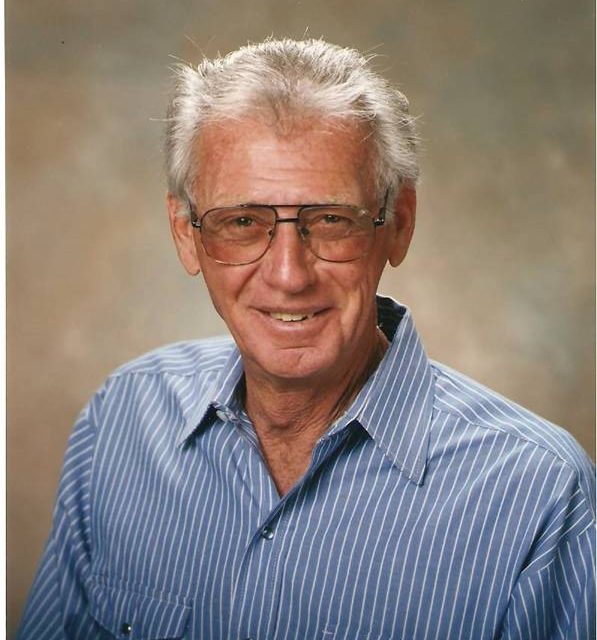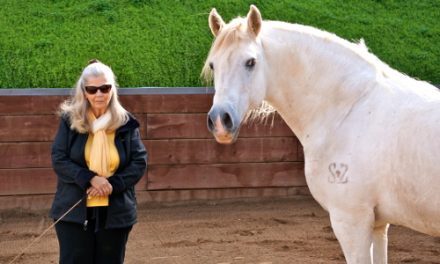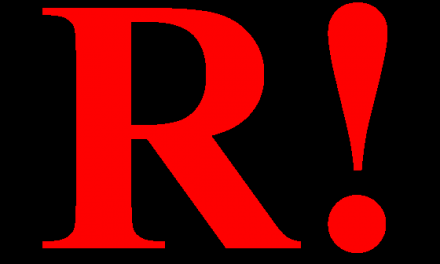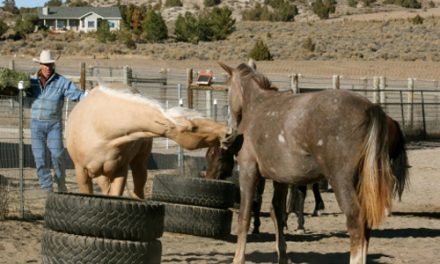Some trainers are simply gifted athletes with a natural feel for a horse. Some are great communicators; others just have a flare for presentation and showmanship.
But there are two things I’ve recognized in every great trainer I’ve met, interviewed or had the pleasure to learn from: “thinking and details”.
There are a lot of trainers who can sit a horse and get the horse to do almost anything. These are the trainers I believe have a natural talent that can’t be explained. The problem is, most of the time, they can’t explain it either and that is why they never become great trainers. They have some success, but really don’t know what it is that creates the success.
It’s these trainers which often spread so much misinformation. Since everything with them seems so natural, they don’t study the mechanics of bits or how the bit fits the horse’s mouth. They stick a bit in a horse’s mouth; call it a cowboy snaffle, and ride off actually using a curb bit.
They can’t tell you the correct footfall sequence for a pivot, yet they can get the horse to turn around in balance, and incorrectly tell you the action started with the front legs.
Yet they get the job done, and usually pretty well.
Then there are the communicators. They always have great stories tell; they can keep a large clientele mesmerized sometimes for years. Seldom do they get the job done well, but they stay in business adding new clients who haven’t yet heard the tall tales.
Those who know “presentation” and have the “flare” generally are not so much trainers as they are procurers of great talent. They buy ready-made horses and they add the “bling” that takes those talented horses to the winner’s circle.
I’ve known several of these “show stoppers” that have won world championships, yet have never actually trained an unschooled horse to an advanced level. These trainers know what it takes to win and they know how to enhance the talents of that potential champion whose skills were honed by an unseen trainer.
Of the three types, the “show stopper” gets the closest to being “great”. The show stopper is involved with every detail of winning.
Like the thinking trainer, attention to detail starts with the selection of the horse. Thinking trainers study how a horse moves, how his conformation will make it easy for him to perform certain maneuvers, how his mental attitude will serve him under pressure. They know breeding specifics because it is a detail that must be honored.
Thinking and detail trainers leave nothing to chance. They know equipment, and they have the equipment needed for aiding horses through the green stages and into advanced maneuvers. They understand nutrition, hoof balance, and the science of behavior modification.
Thinking and detail trainers generally have their niche, not trying to be everything to everyone, but being the best at the one event on which they concentrate. They know to control and manage every detail takes all their time and effort.
I tend to think of the all-around horse and the all-around trainer as willing to be second and third in competition, satisfied with being close because the accumulated points will eventually win. Not so with thinking and detail trainers; they are never satisfied with second because it means they missed a detail or didn’t think things through the correct conclusion.
Thinking and detail trainers know the distance of every stride, the rule for every event, the approach needed for every obstacle, the movement that garners the rewards.
When you want a great trainer for your horse, think, and don’t skip a single detail.
Visit A Horse, Of Course on the Internet at www.donblazer.com





